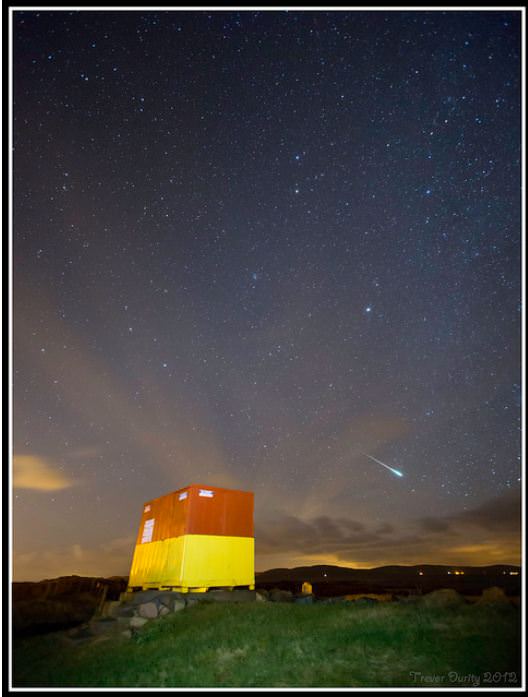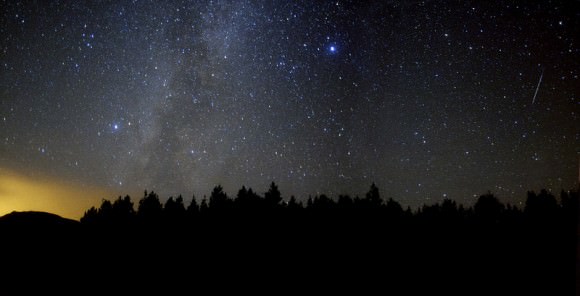The Leonid Meteor shower is usually notorious for the bright fireballs it can produce, but this fireball exploded with unexpected brilliance. Fortunately, an all-sky camera captured the event. NASA said there were numerous reports of a bright fireball over northwest Alabama on Sunday, Nov. 18 at approximately 7:30 p.m. EST. A check of the southeastern cameras operated by NASA’s Meteoroid Environment Office recorded the fireball, and its outburst was brighter than the Moon. If anyone happened to see this or capture anything similar with your camera, let us know!
Astrophotographers did manage to get some images of the Leonids over the weekend — which, other than this bright fireball — seemed to be relatively quiet. See images below:
A Leonid meteor over Trá Mór, Spiddal, Ireland on November 18, 2012 at 4:45 am local time. Credit: Trevor Durity
Trevor Durity captured a small Leonid fireball in the wee hours of the morning on Nov. 18. “One of the few meteors I saw,” Trevor wrote on Flickr. “Pure luck to have caught it … Appeared at first like a very bright shooting star – went about 10 degrees and blew up.”
Also in the picture are the Gemini twins Castor and Pollux to the top middle, M44 the Beehive Cluster to the lower left; and the bright star Procyon to the lower right of the twins, and Leo the Lion on the left hand side of the picture.
A lone Leonid was captured over Donegal, Ireland. Credit: Brendan Alexander.
Want to get your astrophoto featured on Universe Today? Join our Flickr group or send us your images by email (this means you’re giving us permission to post them). Please explain what’s in the picture, when you took it, the equipment you used, etc.



Saw a large fireball meteor on Friday (Nov 16th) evening in the Caribbean. We were anchored on the south side of St. Johns, in the USVI, and were out watching the Leonid. At about 9:30 PM AST, I saw a huge fireball to the south-southeast. Very bright green re-entry, and a huge flash on burn-up. Have seen no other reports of this fireball. Unfortunately, no camera…
A Bolide! Nice! The ‘bright green’ color usually indicates a high oxygen (Ice!) content but sometimes copper? Since most meteors are usually scattered bits left over from previous passages of a comet, that color generally indicates a high water ice content. But sometimes, atmospheric diffraction due to observing angles does that too! aka similar to the ‘Green flash’ phenomena Sol sometimes acquires when seen at sunset.
I was fortunate enough to see this and even heard it. I unfortunately did not get this on camera because I wan’t even looking for it. In fact I didn’t even know what it was. I’ve never seen anything like this in my life! It was the most amazing thing! Such a huge bright light! It fell slowly, and then all of a sudden got even brighter then broke off into several smaller orange lights then it was gone. I was so intrigued that I came home and started searching. I’m glad to figure out what I have seen.
November 18, 2012 about 7:30ish I live in Northern Alabama
All. Sorts. Of. Yes. 🙂
AGW gravity wells are US.
A day later, reporting a 2.6 in Alabama, “Earthquake hit near Cordova Monday morning” (By Madison Underwood; blog.al.com, 11/19/12).